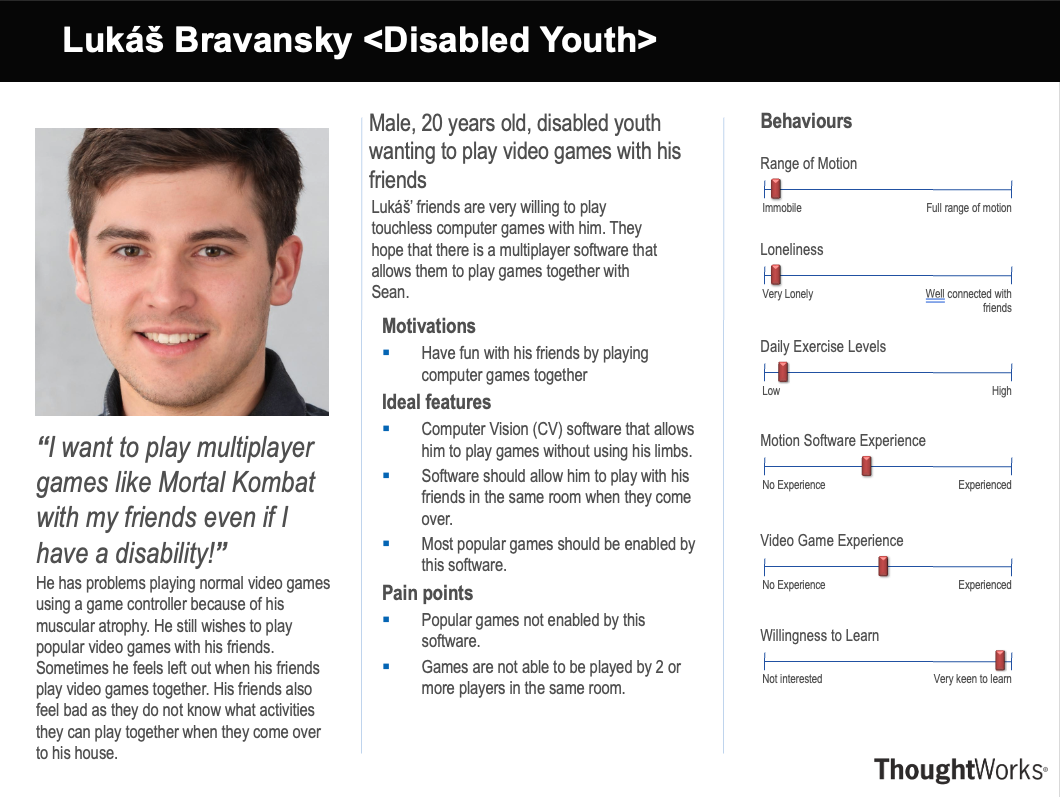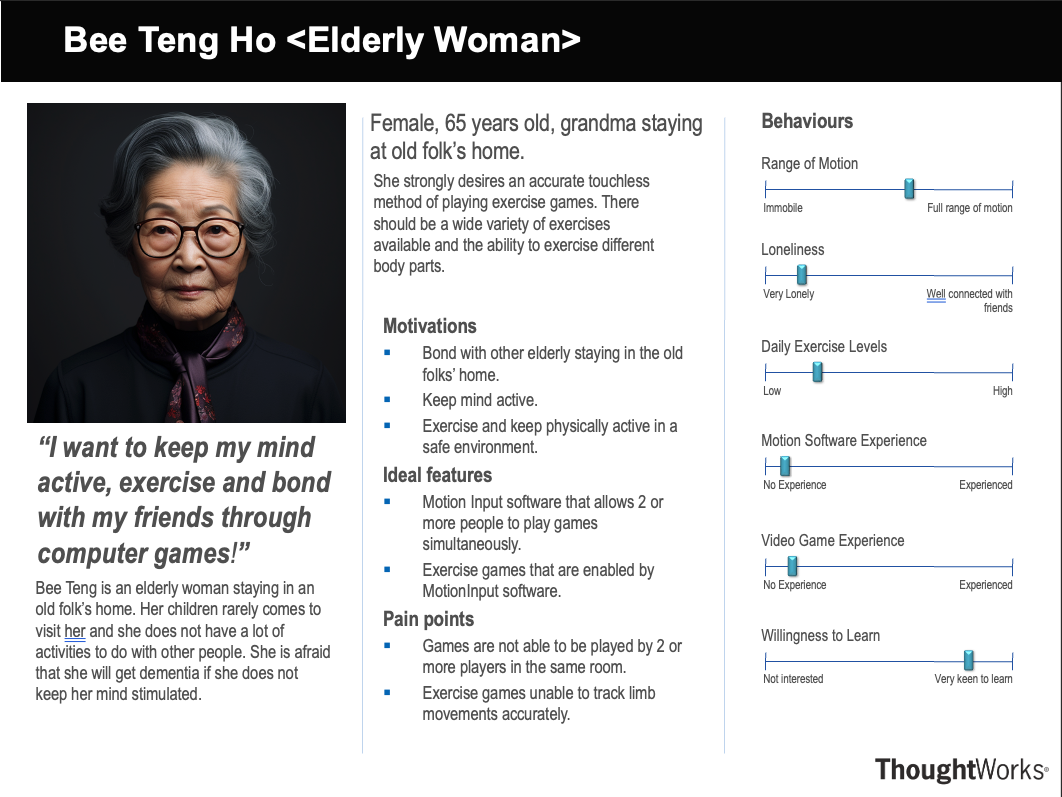Project Background
The story of MotionInput begins with the challenges presented by the COVID-19 pandemic. As a final year project for two BSc Computer Science students at University College London in September 2020, the first version of MotionInput was born. Launched in January 2021, MotionInput V1 introduced two interaction modes. The "Desk mode" offered a fresh take on mouse control, allowing users to manage cursors with air-held pens. Simultaneously, the "Exercise mode" provided a new interface for users to interact through physical activities like on-the-spot marching.
A significant turning point came when a group of MSc Computer Science students took over the project, leading to the development and release of MotionInput V2. This version brought a substantial enhancement in functionality, expanding its motion detection capabilities to include four distinct tracking modalities: hand, full-body, eye, and head tracking.
The continuous advancement of the project has resulted in the release of MotionInput V3, which was introduced to the Microsoft Store. This progression reflects the ongoing efforts to refine and enhance the software, with the development team actively working on subsequent versions, including MotionInput V3.4.
In a recent move to expand its reach and impact, MotionInput has been spun off into a separate entity, MotionInput Games, under the leadership of Dean Mohamedally. This realignment aims to extend the project's influence, facilitating broader user engagement and application.
Project Goals
Understanding the importance of clear communication between stakeholders, we held numerous discussions with our client, teaching assistants, and past contributors to MotionInput in the initial month. These conversations shaped the goals for our project as we understood the direction that the client wants to bring the company, and how we can participate in the vision. We realised that it is crucial to expand the functionalities of MotionInput V3.4 to benefit more users. We also realised that there is a need to democratise access to not only disabled individuals, but future developers building upon MotionInput. Therefore, we set these the following goals for our project.
Democratise MotionInput to future developers
Utilize the MotionInput SDK/DLL to broaden access to MotionInput capabilities beyond just individuals with disabilities, extending it to future developers. This will be achieved by creating and distributing a packaged version that developers can use as a foundation for further development.
Expand customization options for a wide range of end-users
Expand the variety of poses and modes within MotionInput to cater to a wide spectrum of individuals with disabilities, with a particular emphasis on children and teenagers. This enhancement will involve integrating features from earlier versions and introducing new functionalities.
Personas
We have devised two personas that showcase the potential user base our solution can reach, helping us guide the creation of the requirements and further development.


Scenario 1: Lukáš Bravansky
Lukáš is a disabled youth with muscular atrophy. He still wishes he can play popular video games with his friends when they come over to his house to have fun. His favourite game that he hopes to play is Mortal Kombat. He logged onto our platform hoping to play multiplayer video games and is delighted to see that there is a wide variety of popular video games that can be played without limbs. He had a lot of fun playing with his friends in multiplayer mode, able to play the same games that his friends enjoy. He is finally able to participate in the same interests as his friends, instead of just watching them play video games previously.
Scenario 2: Bee Teng Ho
Bee Teng is an elderly lady staying in an old folks’ home. She still has a good range of motion and wishes that she can exercise more. She feels lonely sometimes in the old folks’ home and hopes she can participate in more fun activities with her fellow elderly friends. She logged onto our platform hoping to play multiplayer exercise games. The simple User Interface guided her to choose the exercise games and calibrate the sensor with ease. She was delighted to see that there were a variety of exercise games for her to exercise different muscles. She found it very easy to play as the sensor accurately tracked her actions when performing the exercises. She enjoyed the games thoroughly as she was able to bond with her fellow elderly friends in the old folks’ home.
MoSCoW list
After finalizing our goals, we devised a set of requirements that would enable us to achieve them. This task involved consulting with our client and gathering feedback from the teaching assistants. Subsequently, we converted these requirements into a MoSCoW list to inform our project goals. This approach allowed us to easily track our progress by comparing the number of items on the list that we have successfully implemented or achieved.
| No. | Functionality | Description | Priority |
|---|---|---|---|
| 1 | Functional | Migrate Features from MotionInput V3.2 | MUST |
| 2 | Functional | Design and Develop MotionInput SDK | MUST |
| 3 | Functional | Ensure Windows Solution is natively compiled and not use the cloud | MUST |
| 4 | Functional | Incorporate MotionInput into a Python package | MUST |
| 5 | Functional | Examine build references for DLL and kiosk implementations | MUST |
| 6 | Functional | Finetune MotionInput features at the Richard Cloudesley School | MUST |
| 7 | Non-Functional | Improving compilation processes with data security packaging and obfuscation | MUST |
| 8 | Non-Functional | Support other Migration groups | SHOULD |
| 9 | Non-Functional | Assist BBC shooting and other promotional activities | SHOULD |
| 10 | Non-Functional | Assist the Android build solution | SHOULD |
| 11 | Non-Functional | Prove efficiency gains in optimizing the codebase | SHOULD |
| 12 | Non-Functional | Assist Bluetooth Controller team on porting the codebase | COULD |
